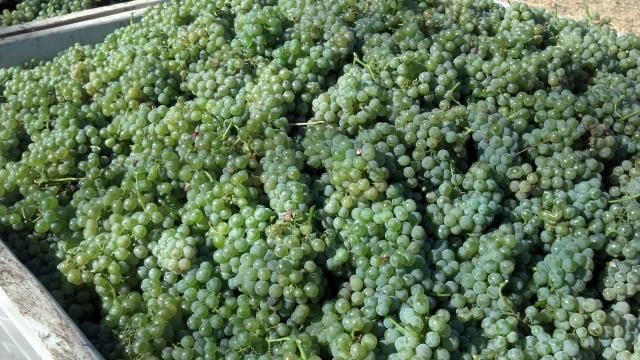Sauvignon Blanc: Grower’s Blog
(The following blog was written by our winemaker Tom Myers for the Paso Robles Wine Country Alliance to coincide with the Paso Robles Wine of the Month.)
It piqued my interest when I learned that Sauvignon Blanc would be the varietal of the month for Castoro Cellars to expound on. Way back when I was an eager enology student we had a class that involved one lecture on each of the major grape varieties.

The various faculty members took turns and it was the legendary UCD professor Maynard Amerine that gave our Sauvignon Blanc lecture. He claimed it was his “desert island” wine because he never grew tired of its beguiling characteristics. I give him credit for initiating my love affair with this variety. Sauvignon Blanc will always have a major place in my personal cellar and no variety has more consistency in providing a satisfying glass of wine for me. Even the name has a nice flow off the tongue and not every variety can make that claim. Also, not of little import, is that Sauvignon Blanc usually has a very appealing color; they are typically pale yellow and are especially attractive when a greenish-yellow tint is present. Sauvignon Blanc has an aroma and flavor profile that seems lifted from an array of fresh fruits and to lesser degree herbs, which you would find on your table. Perhaps that is why I find it such a versatile wine and usable in many situations. Sauvignon Blanc goes well as a luncheon wine, an aperitif and with the lighter courses of dinner. Serve well chilled as that complements the leaner body and crispness of these wines; the aromatics will still be unleashed when tasted.
Enologically Sauvignon Blanc is in a unique category. The delicate aromatic characters do not lend themselves to high alcohol. All in all, Sauvignon Blanc will be lighter and crisper than the average white varietal. Therefore most winemakers choose to harvest it at lower levels of sugar content, resulting in lower alcohol and a higher acidity in the wine. These factors conspire to often make it the first variety to be harvested in the season. Most Sauvignon Blanc is fermented cool in stainless tanks, given minimal or no oak aging and bottled young, with the goal of having the varietal characteristics not be obscured. While Sauvignon Blanc is an easy wine to make, there is always the challenge of finding methods which tease the most intensity from the variety.
Viticulturally the variety has undergone a lot of study in relation to best farming practices. A few decades ago the reputation of this variety suffered from a rash of bottlings that were vegetative and off-putting in character. It turned out that those wines were coming from vineyards that were over fertilized and irrigated. Overgrown leaf canopies and shaded fruit was the source of the inferior character. Allowing the fruit more light and keeping the fruit to leaf ratio in better balance is now known to be the key to premium Sauvignon Blanc.
Historically Sauvignon Blanc is associated with the country of France. Specifically the Bordeaux and Loire Valley are key areas where the variety has historically gained renown. As if to prove the point of its versatility and appeal, it has found its way to most new world locations.
Finally I cannot help but mention, at least from a California perspective, how Sauvignon Blanc has always taken a backseat to Chardonnay. The merits of Chardonnay notwithstanding, I scratch my head at this fact and believe that Sauvignon Blanc should be just as highly regarded.
Tom Myers
Castoro Cellars


